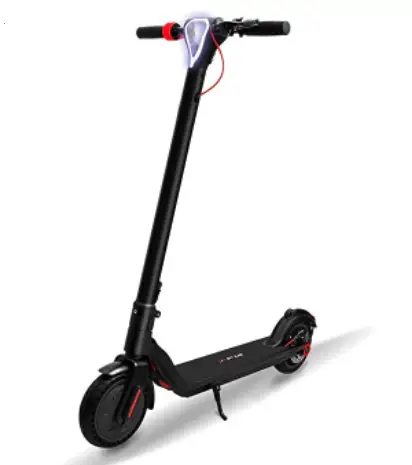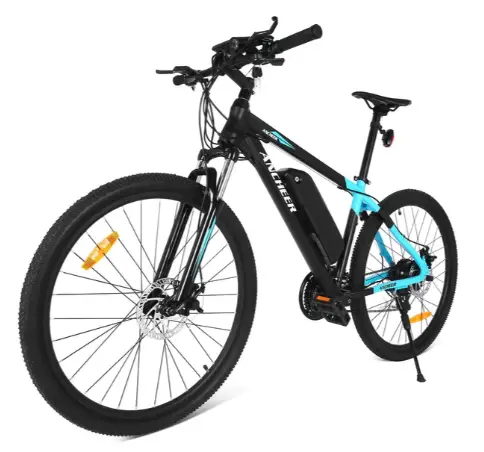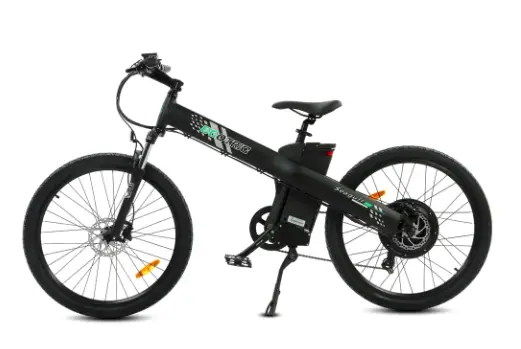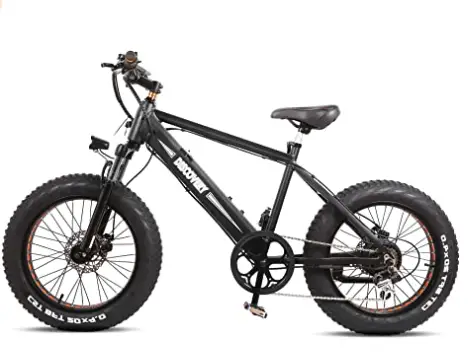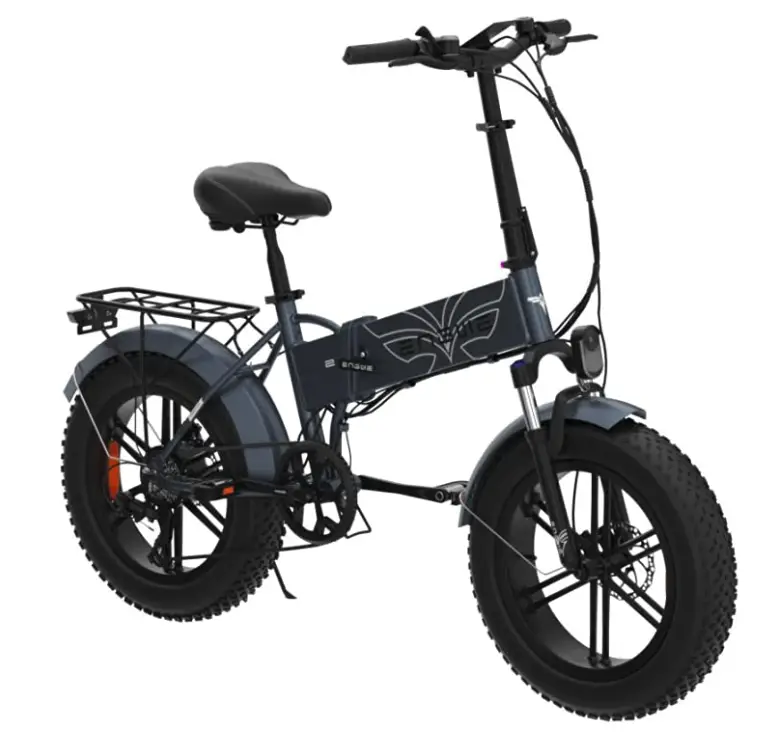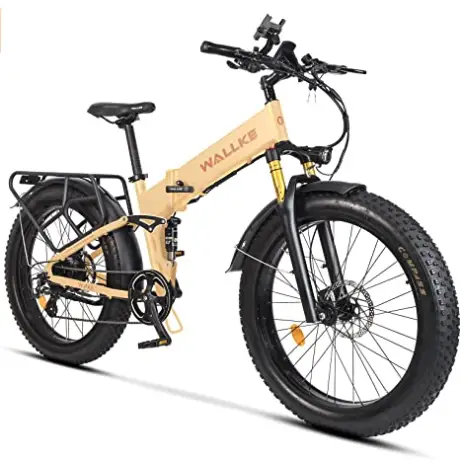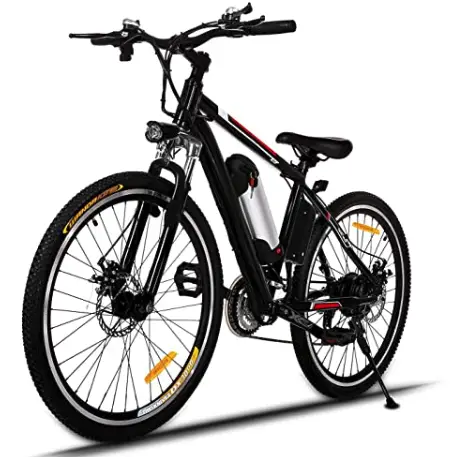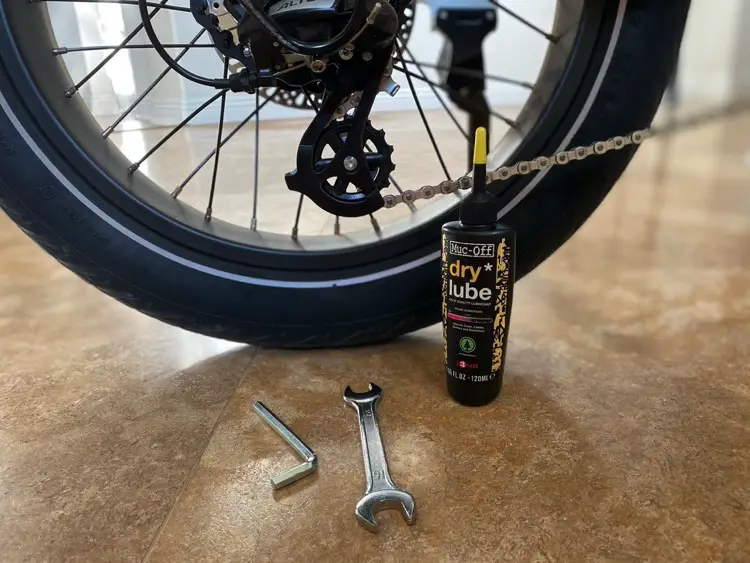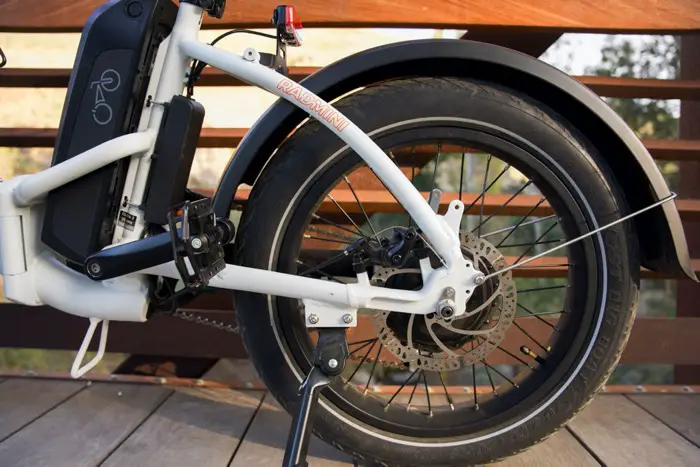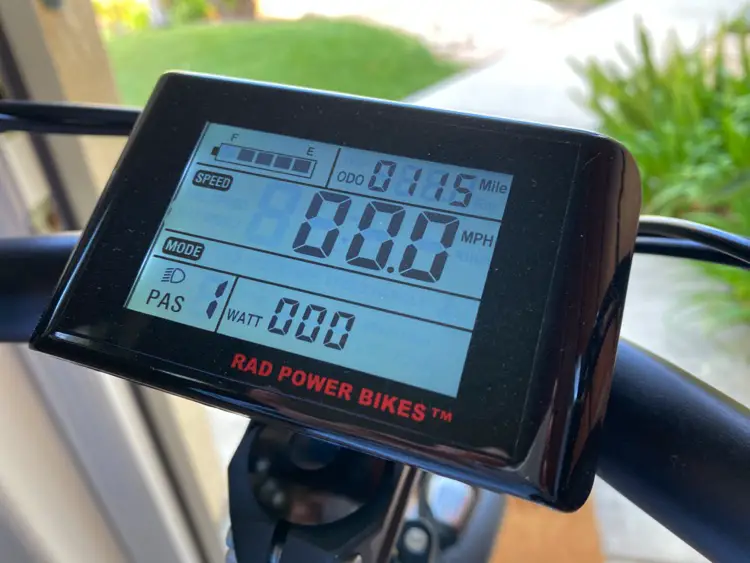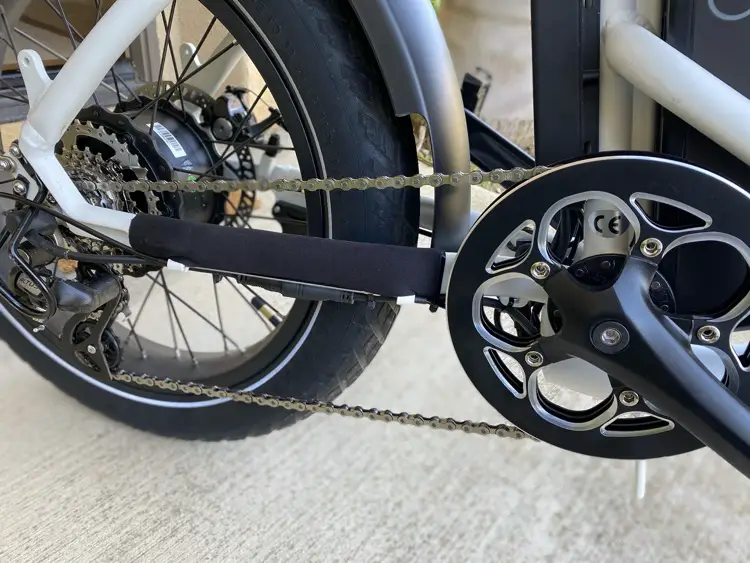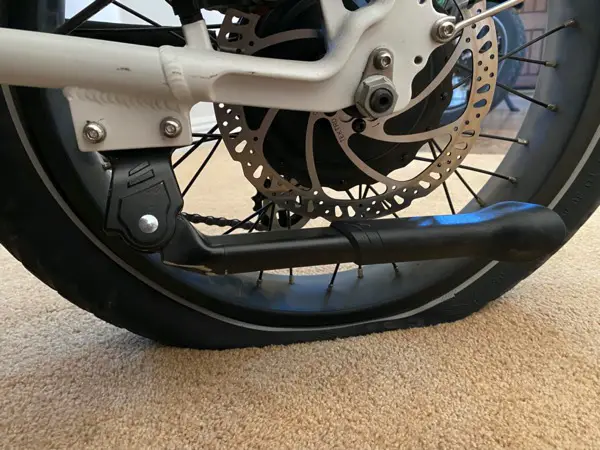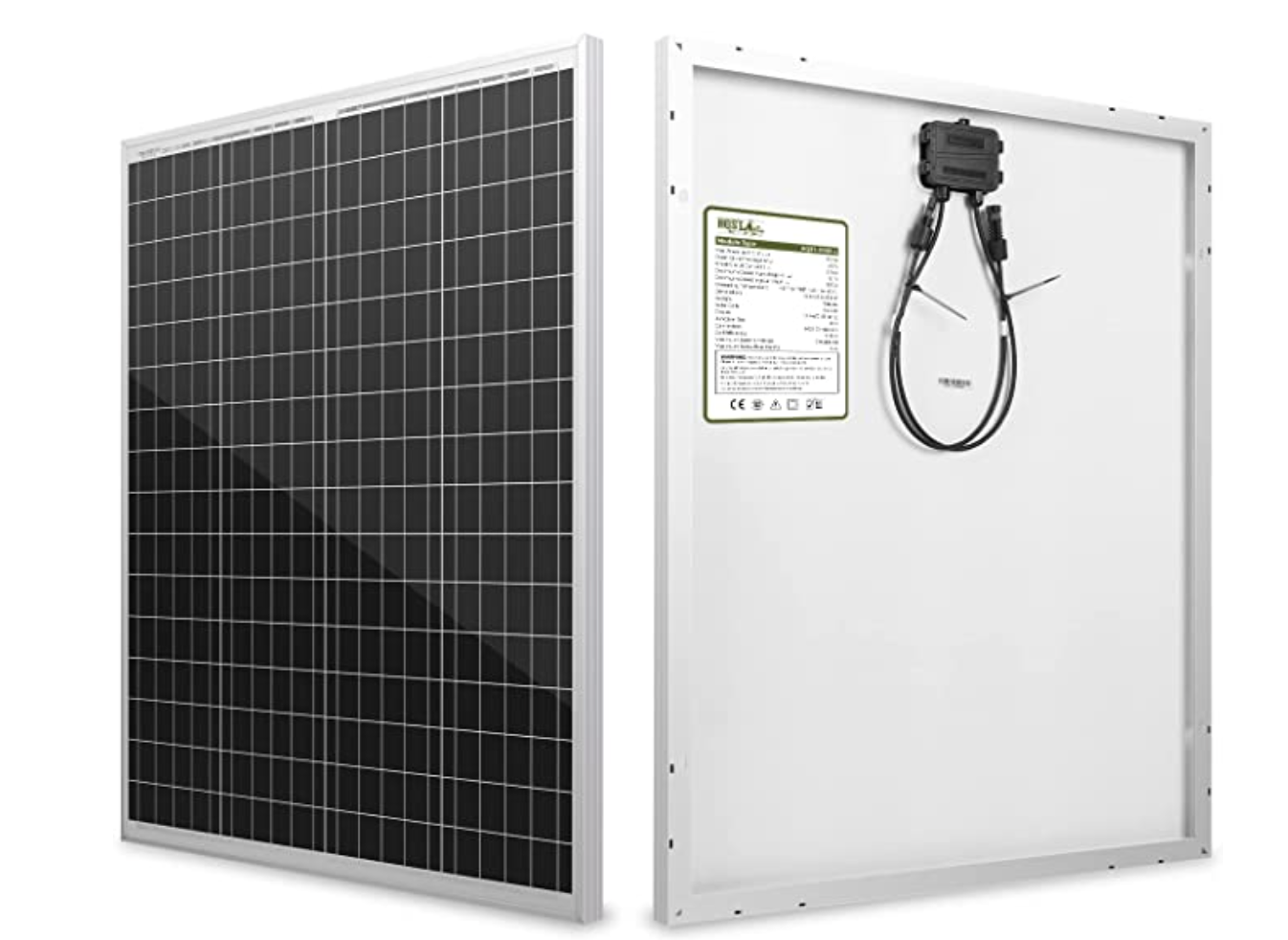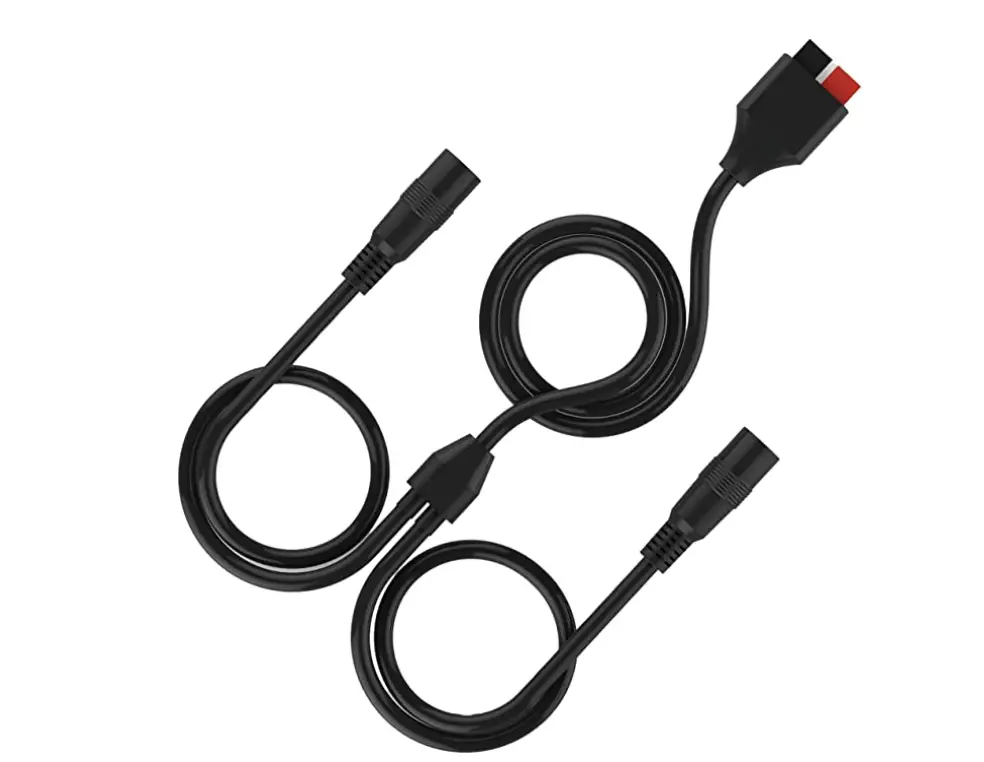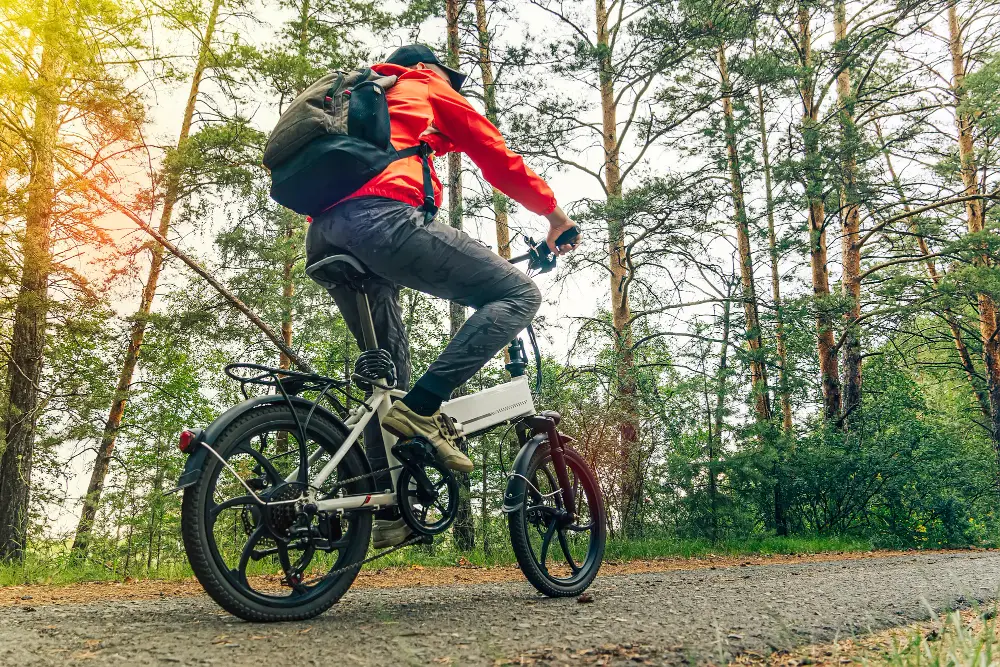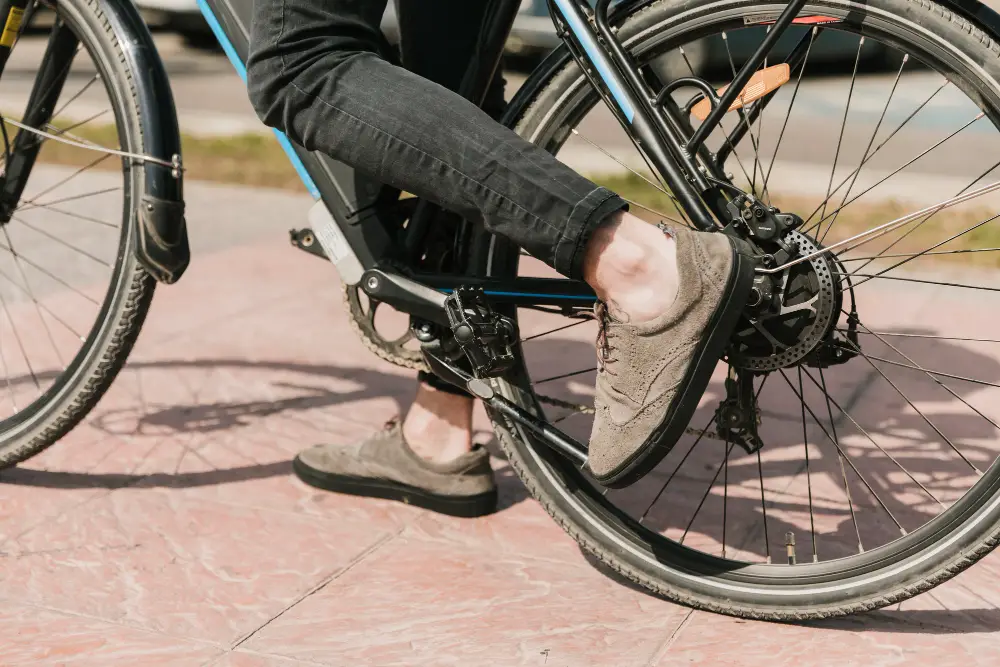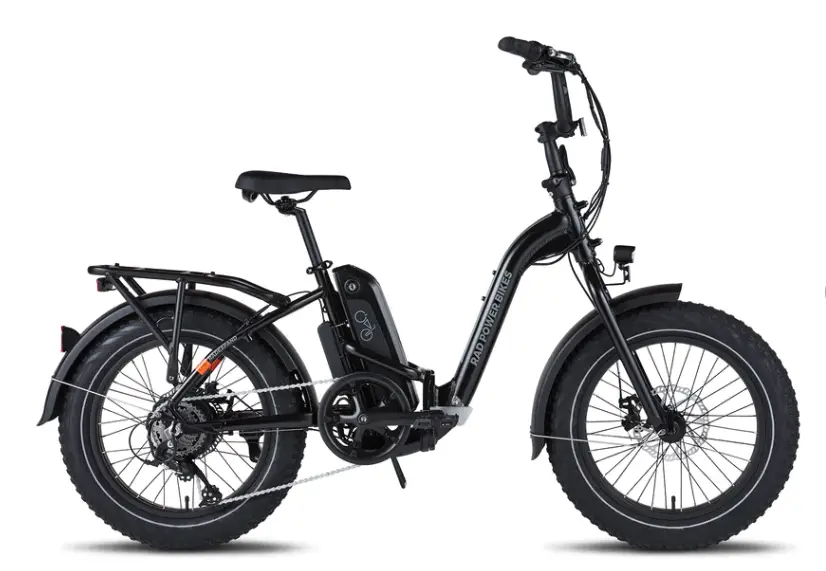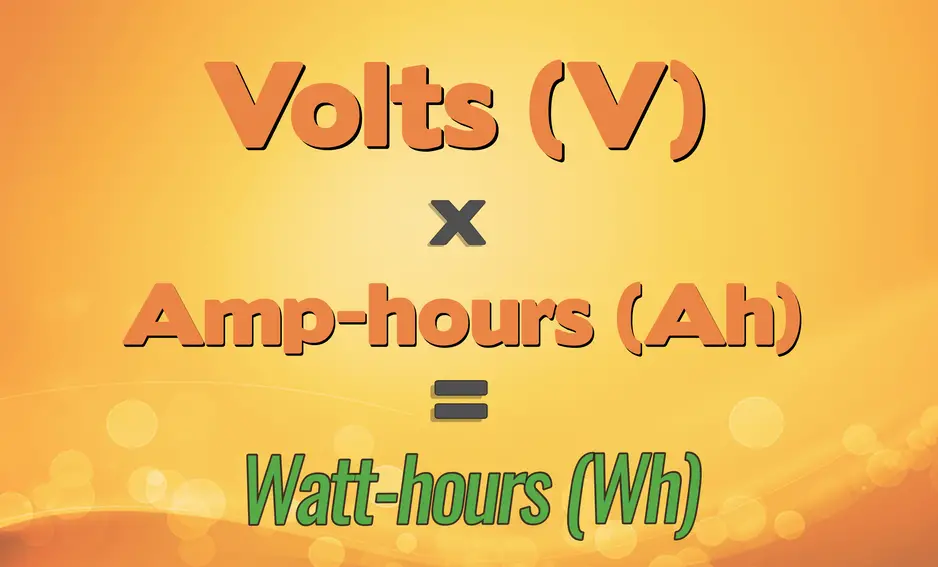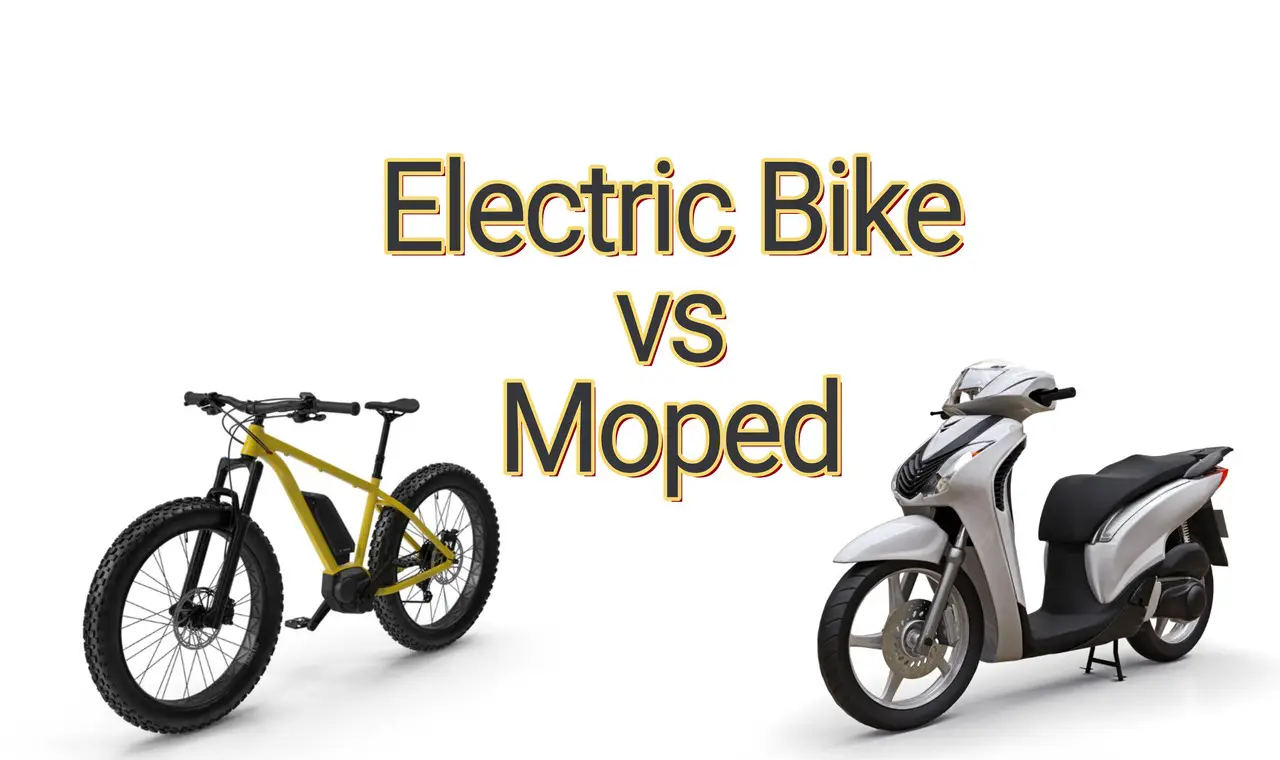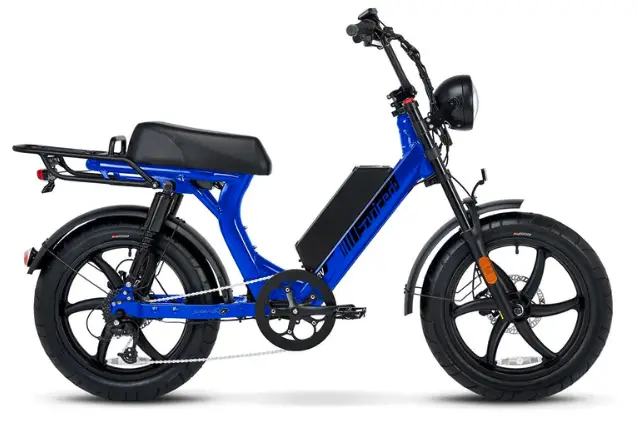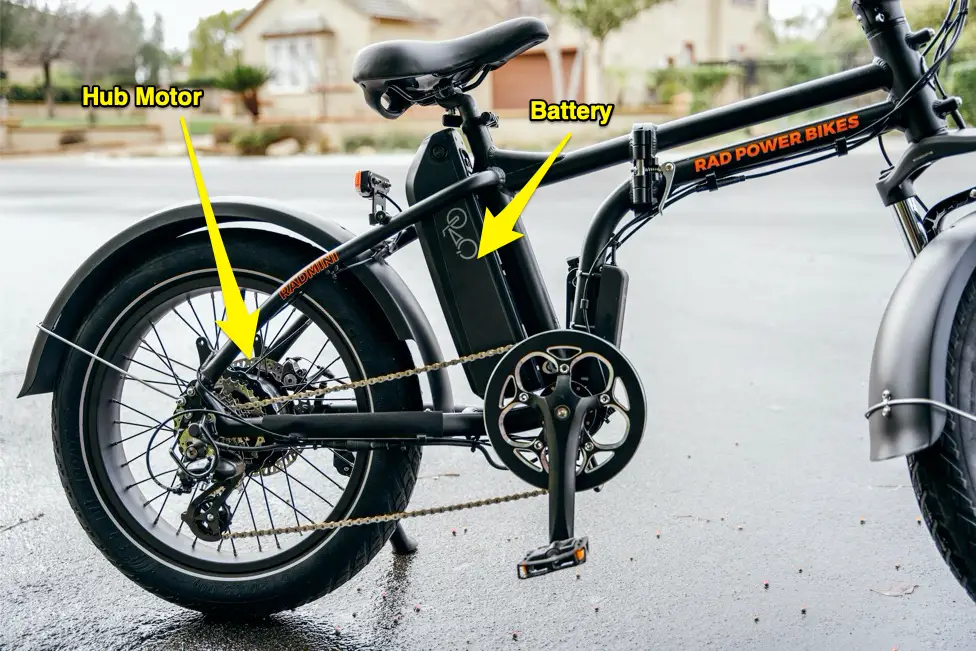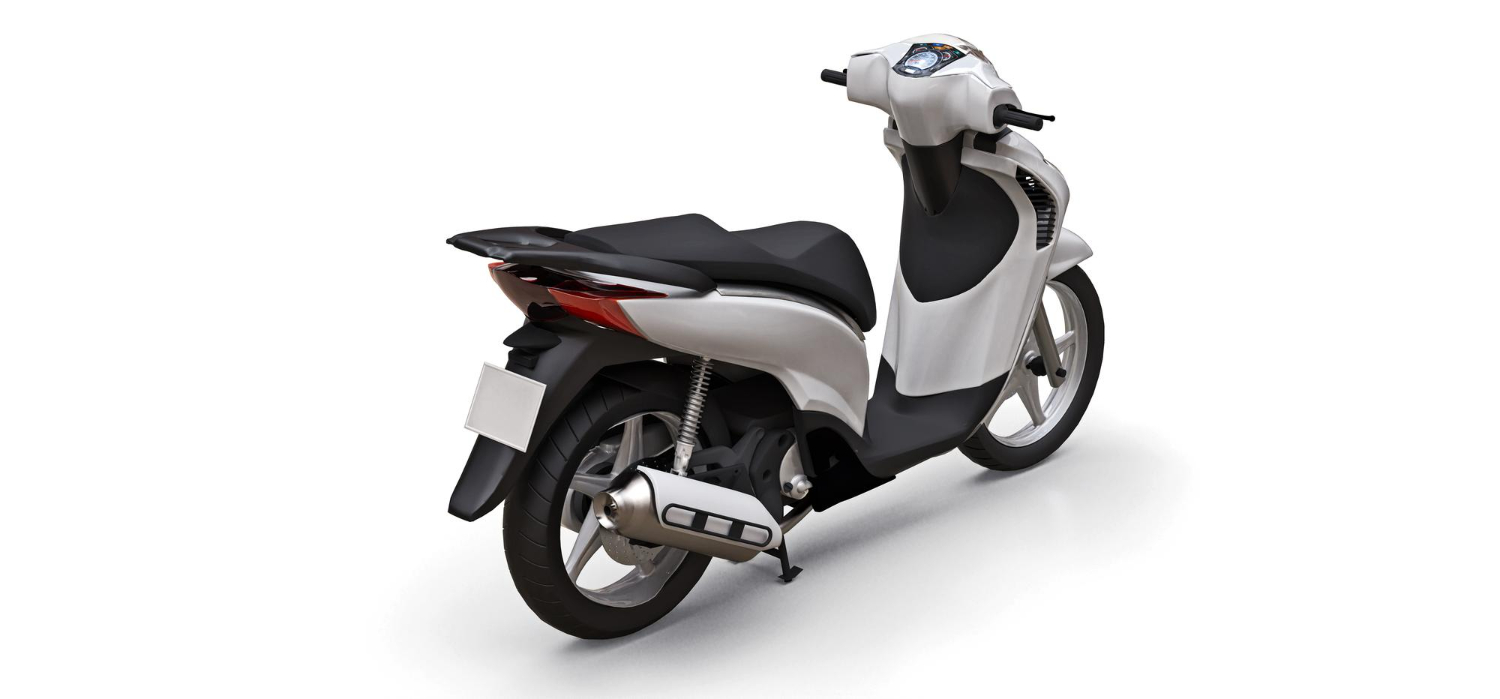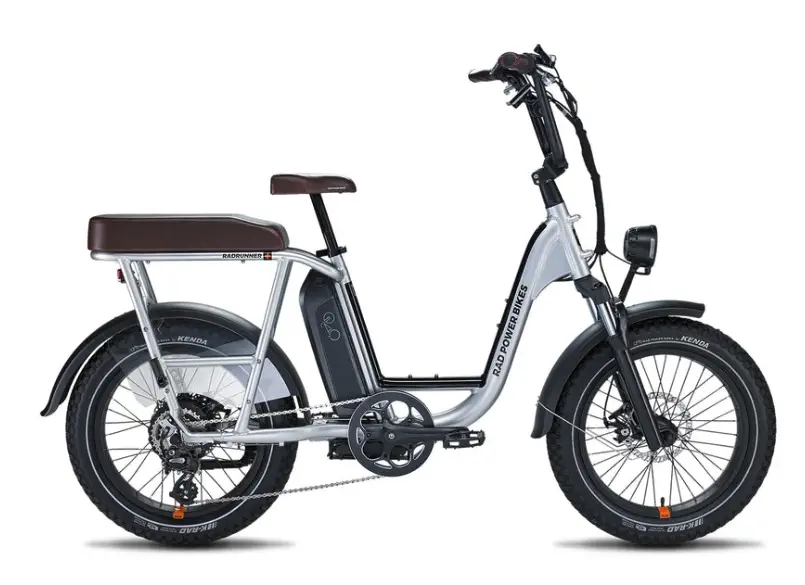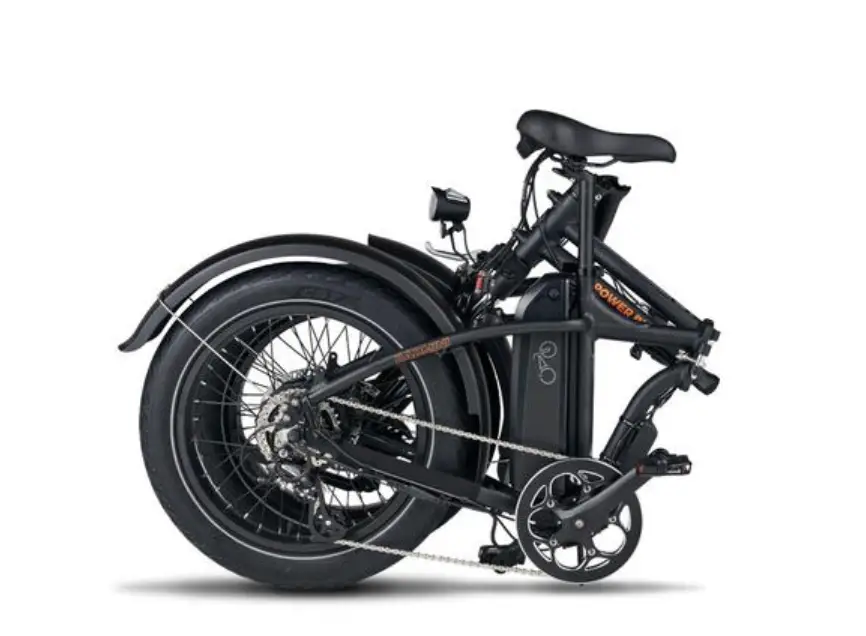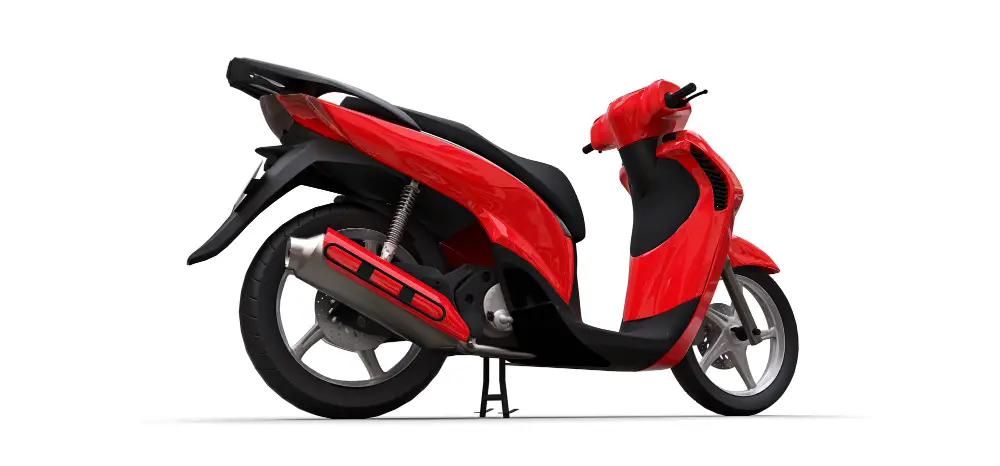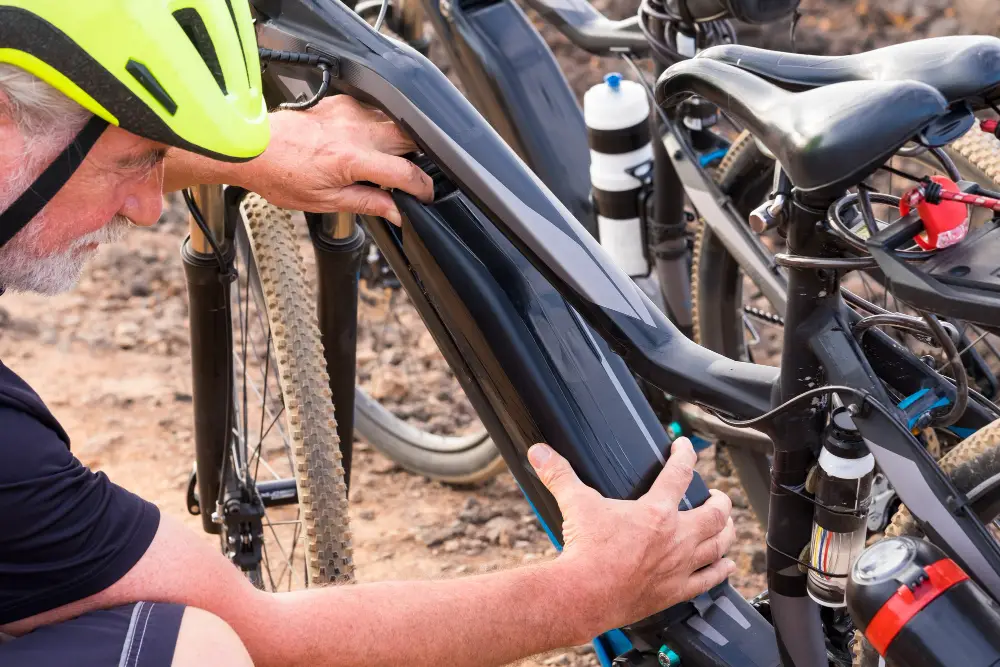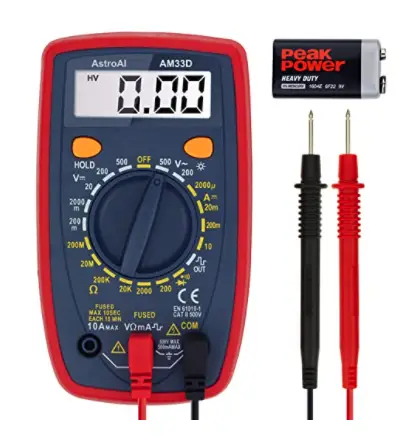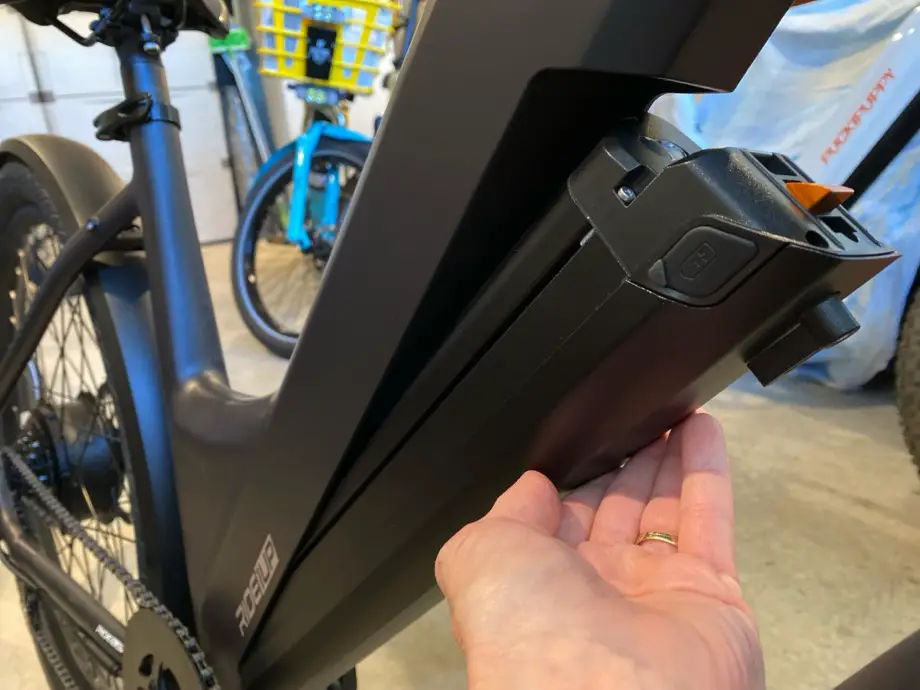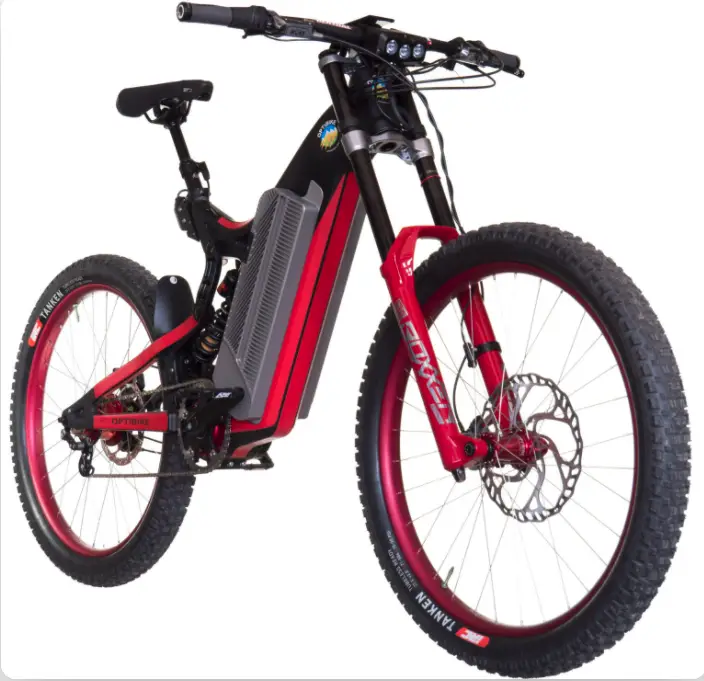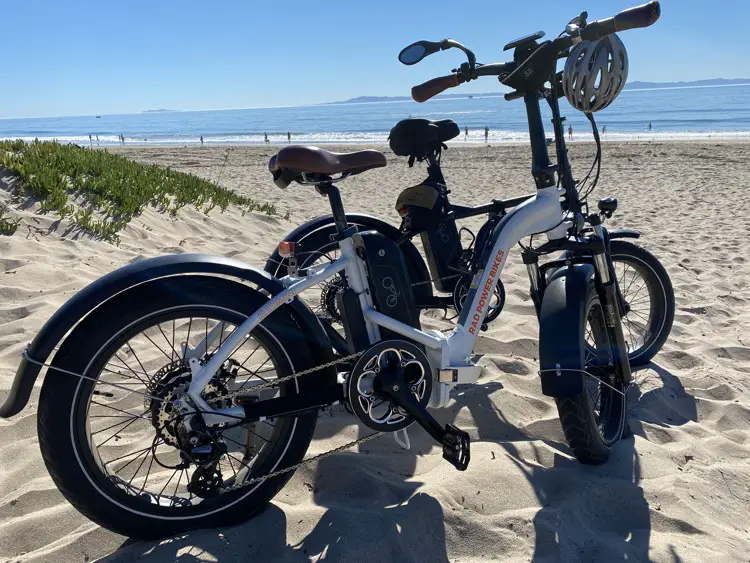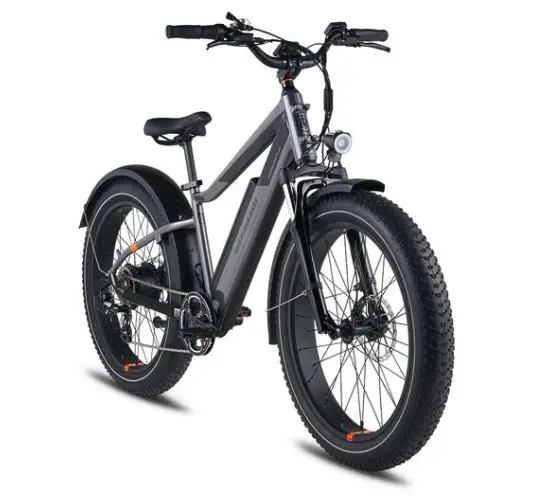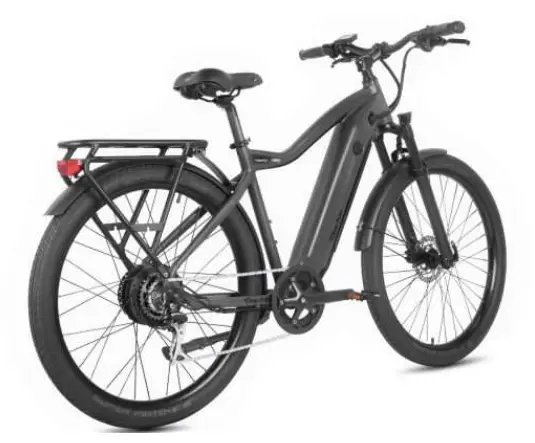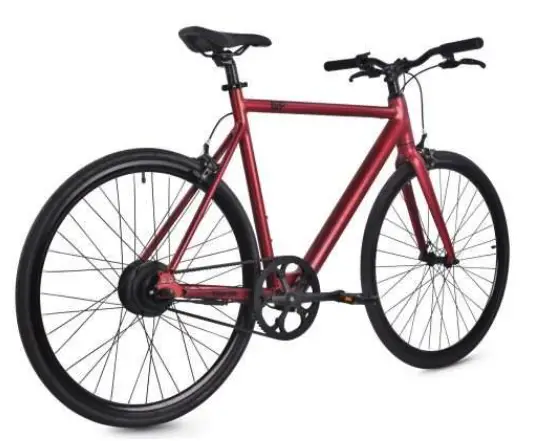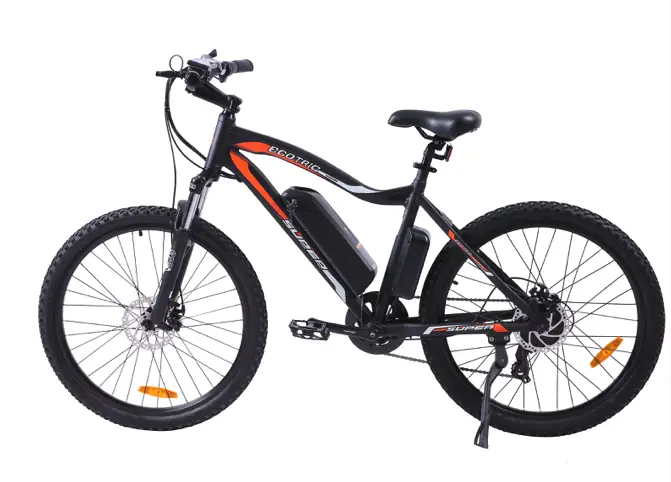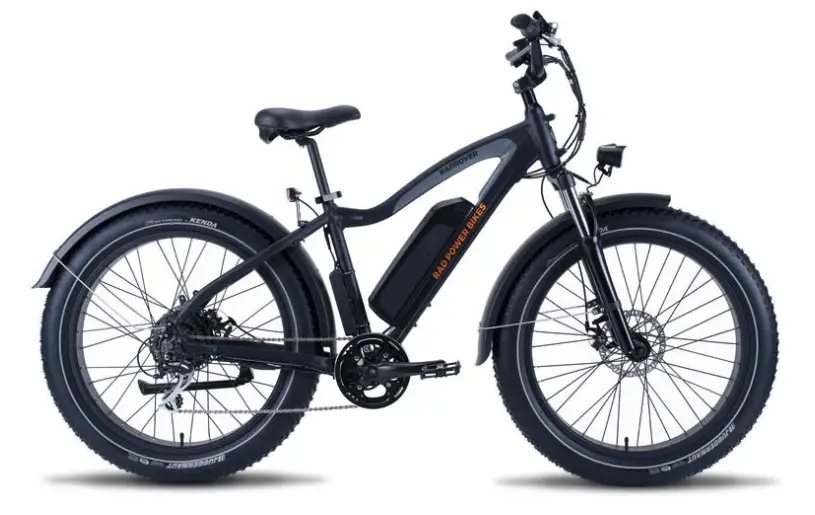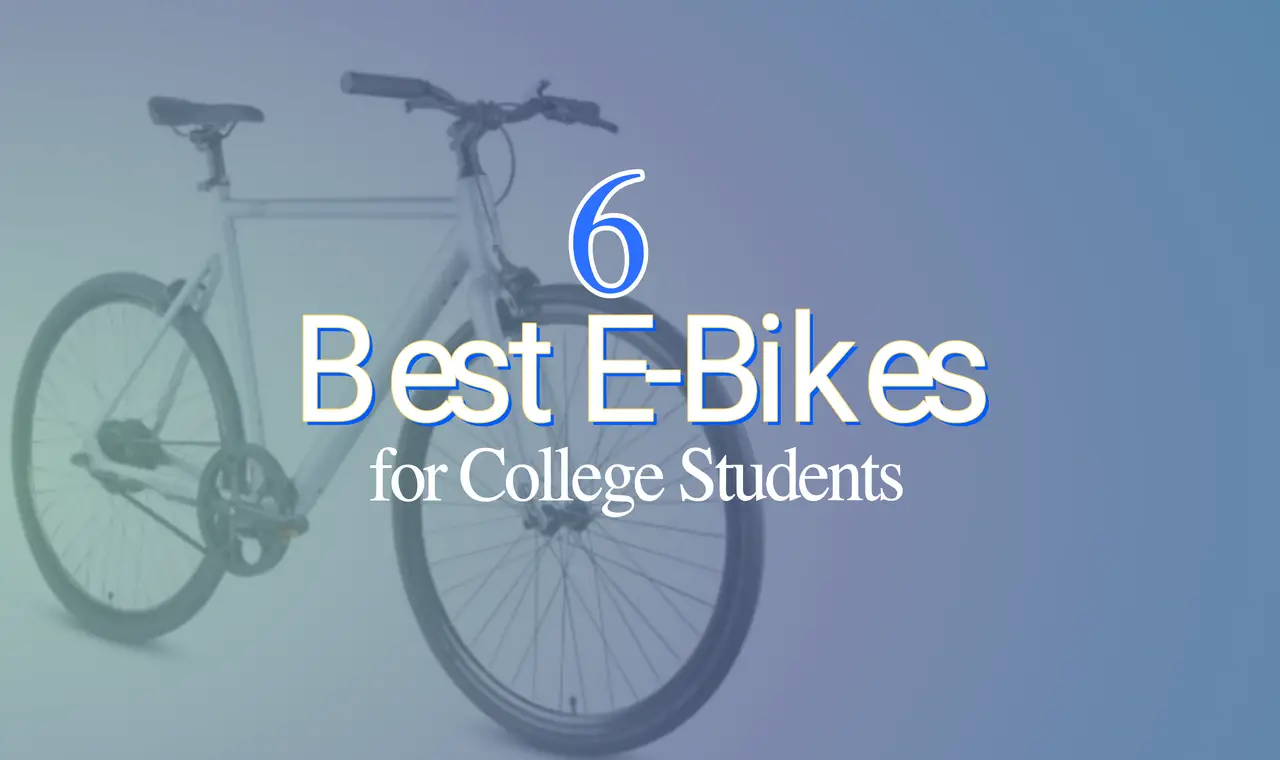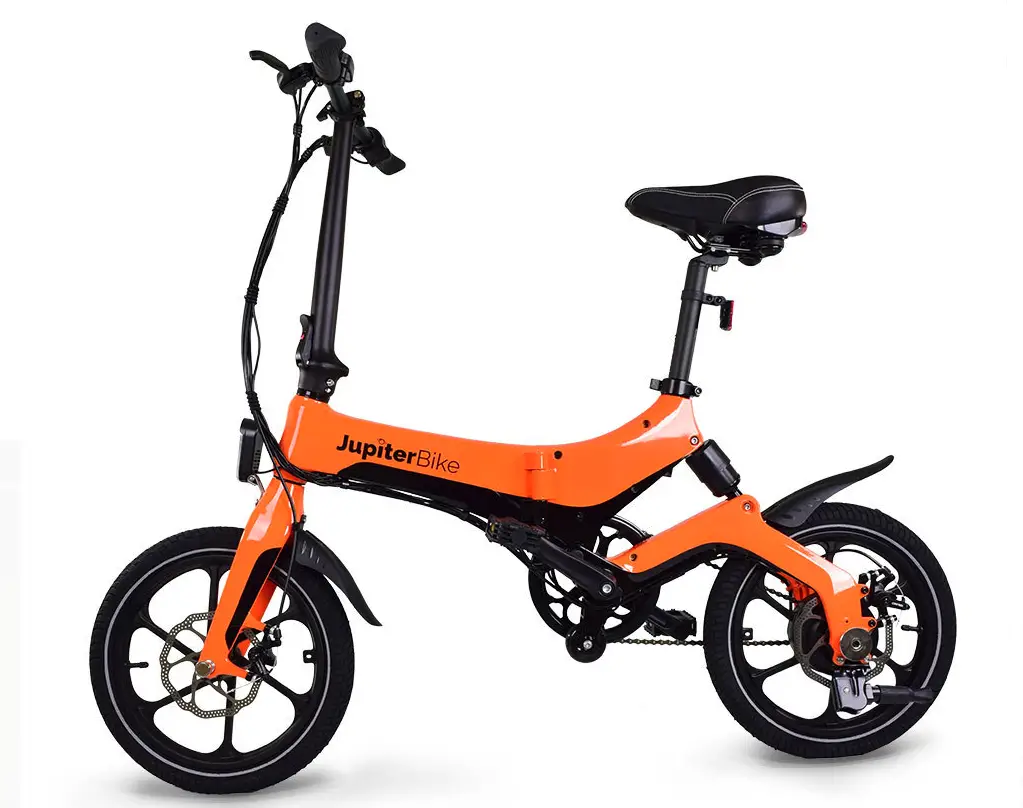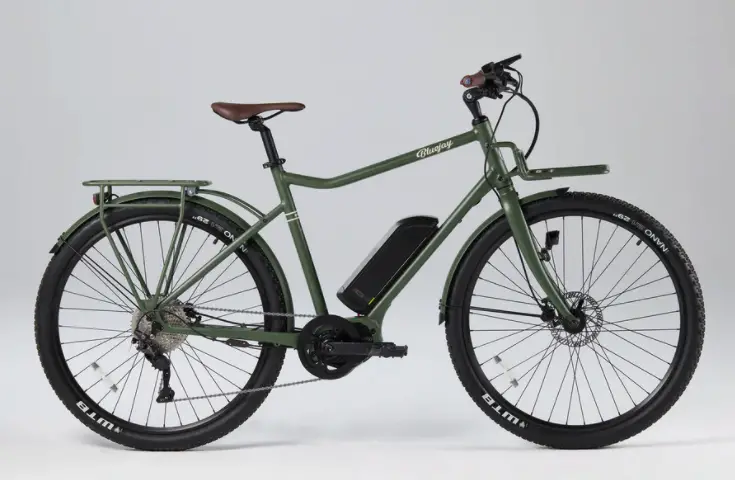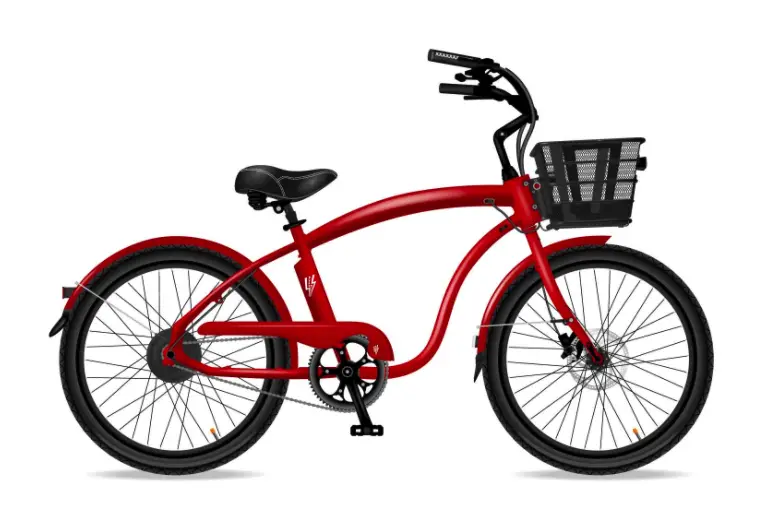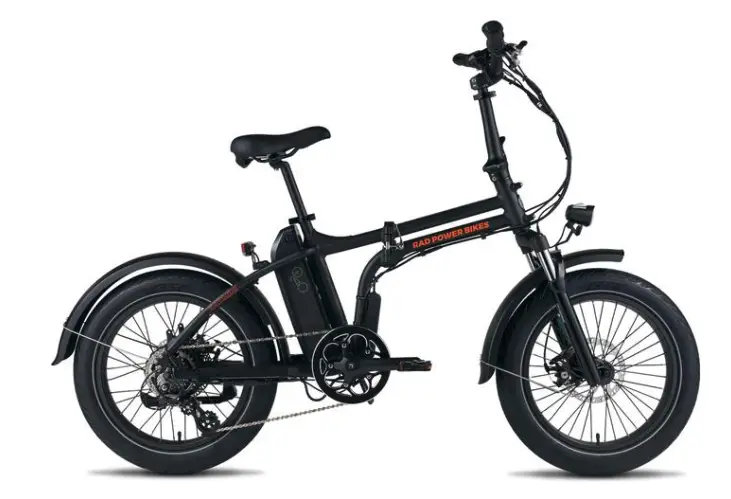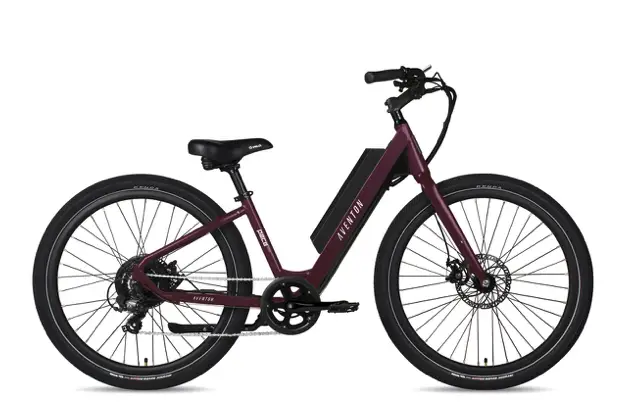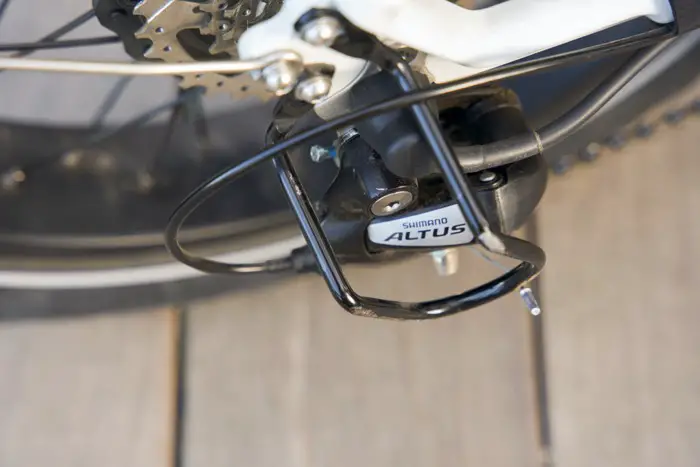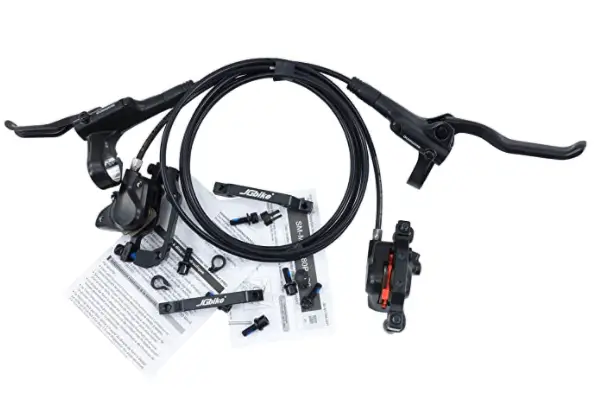Folding electric bikes and electric scooters are both popular ways of getting around. They can both help you get a lot further with significantly less effort. They are somewhat similar, but plenty of things set them apart.
Folding e-bikes are collapsible bicycles with a motor to help make pedaling more manageable, especially over long distances and challenging terrains. Electric scooters work with a motor rather than relying on the rider to push it along.
Both can be your personal electric vehicle, but which one is best for you?
Let’s break down all the differences between folding electric bicycles and e-scooters. I’ll walk you through the differences and help you determine which one might be better for you. So, hop on, and let’s get into it!
What Are the Differences Between Folding Electric Bikes and Electric Scooters?
Folding e-bikes and e-scooters are only becoming more desirable and common. Both of these battery-powered vehicles are ideal for zooming around town or getting places without powering up a car. However, if you can’t decide which one is right for you, then you’ll have to weigh out the differences and determine what you want in an electric two-wheeler.
The main differences between folding e-bikes and electric scooters are speed, maneuverability, range, and terrain. They also differ in size, weight, and insurance costs, which can be determining factors for deciding which works best for you.
Let’s discuss these differences in more detail.
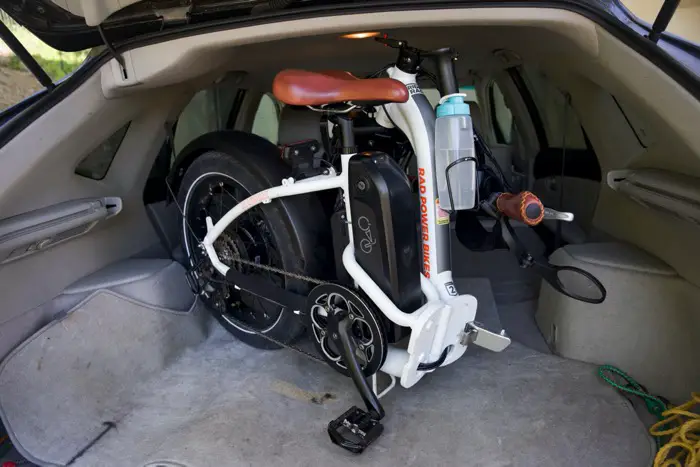
Folding E-Bikes Are Faster Than Electric Scooters
One of the main differences between folding e-bikes and e-scooters is their speed capability. Generally, even riding electric scooters faster can’t reach the speeds that electric bikes can.
An electric scooter’s average speed is about 10 mph (16 km/h) when riding on flat, smooth terrain. That is a pretty decent speed, especially when traveling with people or cars nearby. However, because of their tiny wheels and small batteries, they can’t go as fast on hills and bumps, so they aren’t going to get you where you need to go very quickly.
All kinds of e-bikes, including foldable ones, can reach higher speeds. The motor of many folding electric bikes will typically assist your pedaling until you reach about 20 mph (32 km/h). There are exceptions to this speed limit with electric bikes that are more expensive and have a more powerful motor, but you can expect an average e-bike to reach about 20 mph (32 km/h) before the electric motor cuts out. Beyond this point, you can pedal to go even faster, sometimes up to 28 mph (45 km/h).
Read my review of my husband’s and my RadMini folding e-bikes!
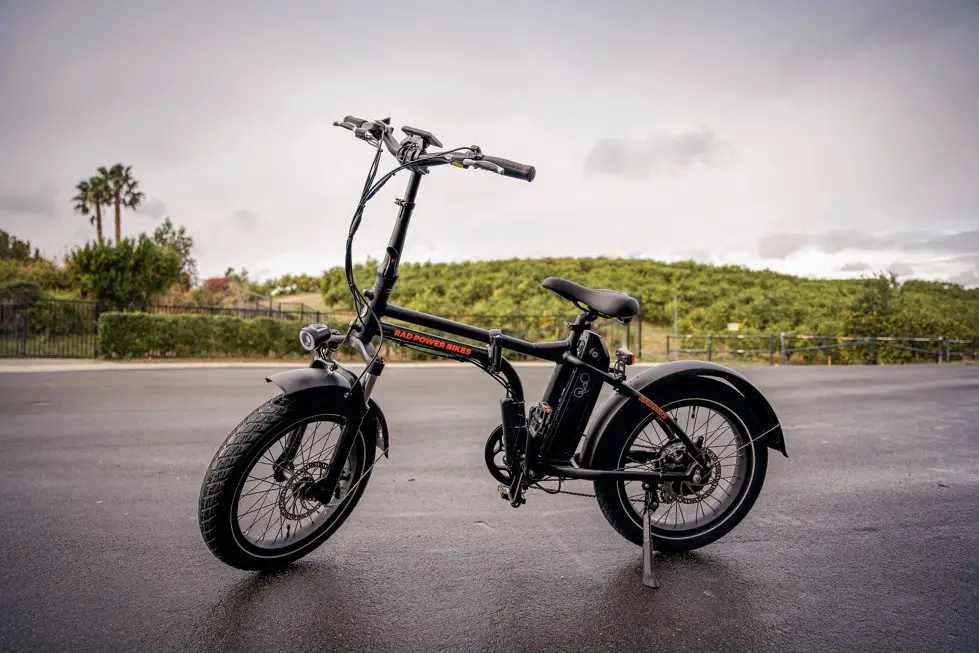
The differences in speed between these electronic two-wheelers boil down to power and safety.
Electric scooters are low to the ground and have small, hard wheels, which means they tend to pick up every bump on the road. So, higher speeds in an electric scooter may not be safe, depending on the design. We’ll get more into the safety of these machines later.
The clear winner when it comes to overall speed is the e-bike. It can easily reach double the speed of an electric scooter. Though it may not always be necessary to go that fast, it is certainly nice to have the option, especially on open, smooth pavement. So, if speed is an essential factor, you may want to consider an e-bike.
To learn more about e-bike motor speed regulations, you need to understand how e-bikes are classified.
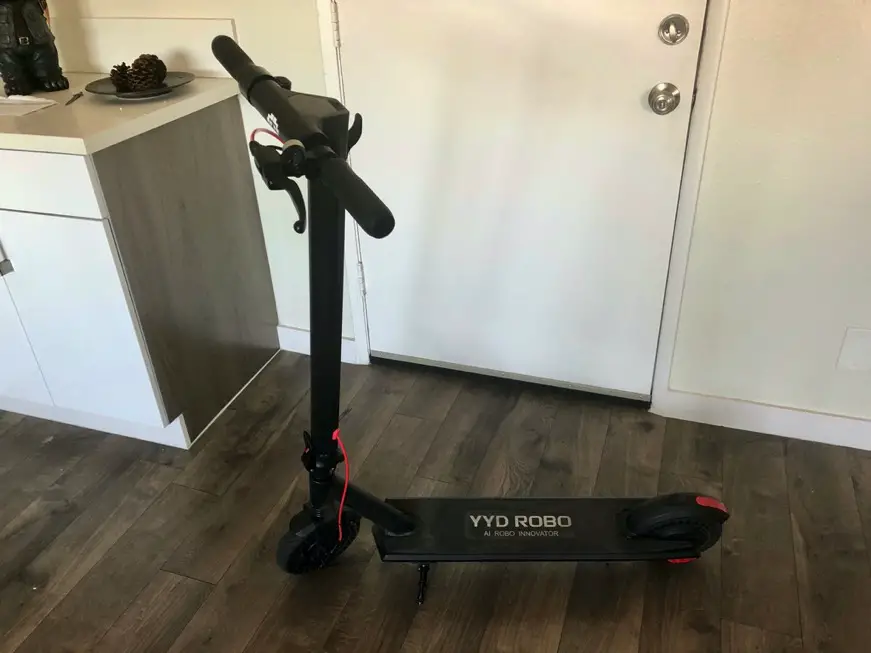
Electric Scooters Are Easier to Maneuver Than E-Bikes
Another main difference between the electric scooter and a foldable e-bike is its maneuverability.
A scooter is smaller than an e-bike, making it easier to move around in a crowded place, such as when riding on a college campus or in a big city. With an electric scooter, you can easily slide between cars or people depending on where you choose to ride.
Folding e-bikes, just like traditional bikes, are bigger than the body of an electric scooter.
So, it will be a little more challenging to fit in tight spaces. Also, since electric bikes are larger and faster, they are more difficult to maneuver in crowded areas. Busy city streets might not be the best place to take your electric bike if you want to ride comfortably and smoothly.
When it comes to maneuverability, the electric scooter (like this one on Amazon) is a clear winner. The smaller body and less bulky design allow you to power your way through busy city streets effortlessly.
E-Bikes Have a Longer Range Than Electric Scooters
The range of these electric vehicles is difficult to guess because there are so many variables regarding how far your e-bike or e-scooter can make it.
The average distance will depend on how long the battery charge will last. So, the type of battery, wattage, and how you treat your electric scooter or bike will all make a difference in the range of these two-wheelers.
The average electric scooter will go from 6 to 25 miles (9.7 to 40 kilometers) on one charge. That’s a wide range that may leave some potential buyers scratching their heads. So, let’s talk about why the battery range of your bike or scooter varies so wildly.
Many things can affect how long an electric scooter battery lasts, like:
- Weight
- Type of battery
- Terrain
- Speed
While the same things affect the range of a folding e-bike, electric bikes tend to have a longer range than e-scooters. Most e-bikes will take you anywhere from 20 to 100 miles (32 to 161 kilometers) depending on the same factors we talked about above. So, you get substantially more range from an electric bicycle compared to a scooter.
Overall, a folding e-bike is better for long-distance traveling. In contrast, e-scooters won’t get you as far. So, whichever option you choose will highly depend on how far you want to take it. However, if range matters to you, then the clear winner is the electric bike, as its minimum range begins around where the scooter’s range ends.
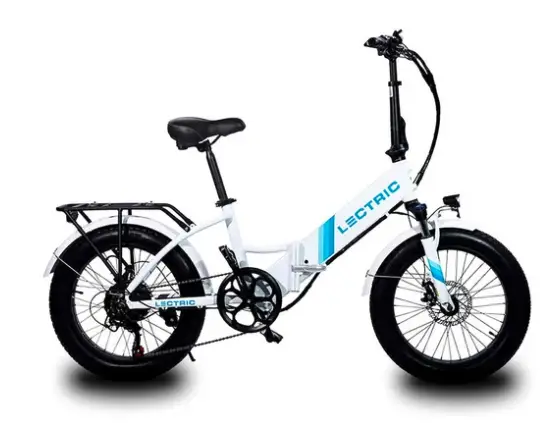
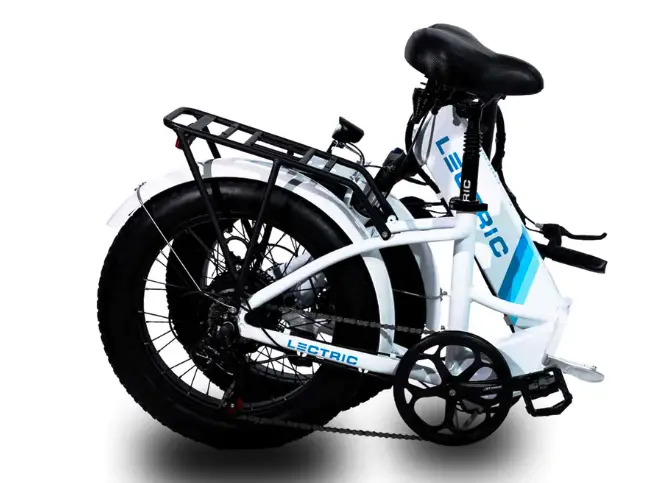
E-Bikes Perform Better on Rough Terrain
The type of terrain is often overlooked but essential to consider when addressing the folding electric bike vs folding scooter debate.
So, it is critical to consider where you plan to ride your electric two-wheeler.
Overall, folding e-bikes are going to be able to handle rougher terrain much better than scooters. The motor will help you get up challenging hills and almost all bike tires will manage a wider variety of terrain than a scooter’s tires.
Electric scooters will not give you that same terrain versatility that you see when you ride electric bikes. Off-roading with an electric scooter is not an option considering the small wheels and low, flat body. They aren’t able to handle rugged terrain like e-bikes. Instead, you will feel almost every bump in the road when riding over anything that isn’t smooth. You might even lose your balance or get thrown off your scooter, so safety is an issue.
If you want to take your two-wheeler off-road, then an electric scooter is not the one for you.
In general, e-bikes have better stability and shock absorption, minimizing bumps. So, with an e-bike, you will feel bumps, but nothing like an electric scooter.
Choosing a folding e-bike with fat tires or tires built for rough trails (such as on an electric mountain bike) is an excellent choice for off-roading or riding on bumpy roads and sidewalks. That doesn’t mean a folding electric bike won’t do well on paved roads too. Electric bikes may be able to do both, depending on the bike itself and the type of tires.
Also, scooters are not ideal for going up or down steep hills because of their small tires and low body. However, e-bikes can make steep hills more scalable since they’ll help you reach the top with their powerful batteries.
Folding E-Bikes Are Heavier Than Electric Scooters
While both the electric scooter and the folding e-bike are easily portable, the weight can be a significant factor in what works for you. E-scooters tend to weigh less than folding e-bikes.
Electric scooters start at about 15 pounds (6.8 kilograms), while mini folding electric bikes start at around 40 pounds (18 kilograms). The weight of full-size folding electric bikes, however, can be as much as 80 lbs (36 kg).
Folding electric bikes are far more portable than their non-collapsible counterparts, but they can still be pretty hefty and hard to move. So, if you can’t easily lift a 70-pound weight and often take your e-bike places where you need to lift it, opting for a folding scooter or mini electric bike might be best.
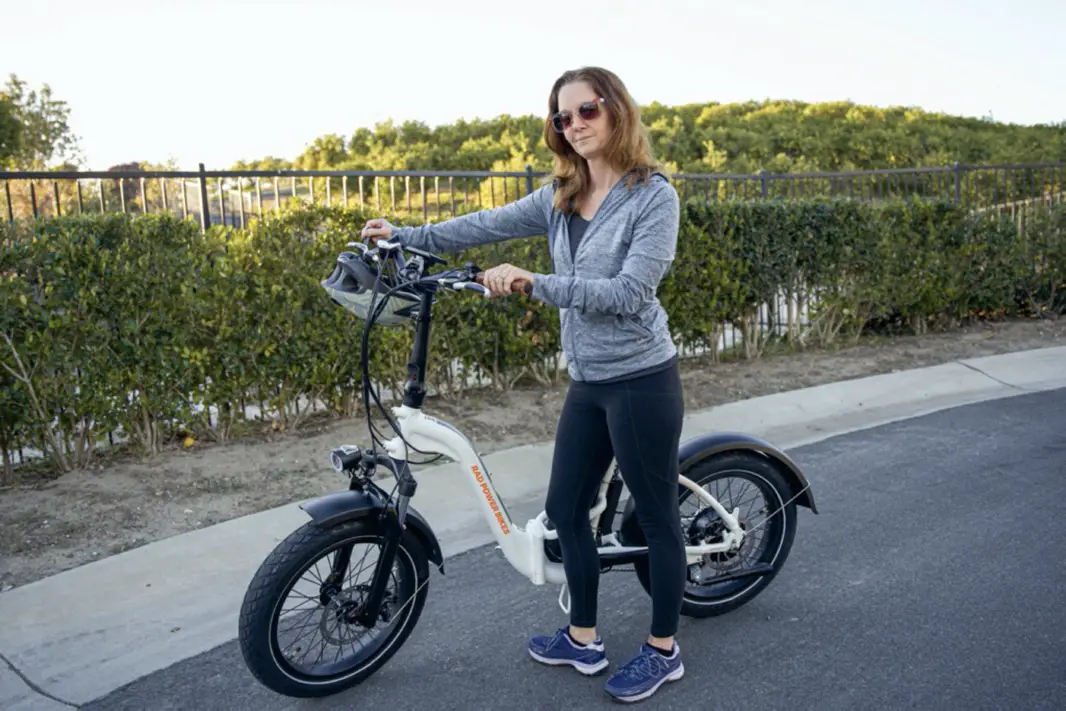
So, both give you good options for easy portability, but there’s a vast difference between these two vehicles.
If you plan to carry around your two-wheeler or take it on trains and downstairs, you may want to opt for a scooter.
If weight makes a difference in which one you choose, most electric scooters tend to weigh significantly less than folding electric bikes. Not only are e-bikes bigger, but they also have a lot more power. So, the difference in weight makes up for things like battery life and speed.
Costs To Insure a Folding E-Bike Versus an Electric Scooter
Insurance is essential to consider whenever you purchase a folding e-bike or electric scooter.
Insurance is not required by law for either mode of transportation, but you should consider it. It is a good idea to consider insurance whenever you spend money on something you will use as much as these.
Getting insurance isn’t a bad idea considering the investment of purchasing a folding e-bike or electric scooter. Covering your two-wheeler will ensure you don’t have to replace any parts in case of an accident. So, it is worth considering insurance for whichever one you choose.
Let’s talk about the price differences.
Electric Scooter Insurance
E-scooters are overall less expensive than folding e-bikes. So, the insurance rates are going to be cheaper as well. The average electric scooter costs $300 (like these ones on Amazon), depending on the quality you want. So, insurance may not seem like the most important thing.
If you purchase a more expensive electric scooter or you can’t afford to replace yours if something happens, then insurance may be worth considering. The average insurance package, which tends to cover theft or damage of the scooter, will cost about $20 to $30 per year for an electric scooter, depending on the company you go through.
Electric Bike Insurance
When it comes to electric bicycles, you may consider insurance more heavily. Most e-bikes tend to cost about $1,000 on average for good quality. The lower side may get as low as $600, but that’s about the lowest you can expect to pay for a good electric folding bike. So, that may make you want to consider insurance coverage as it may be tough to replace your bicycle.
If you are looking for insurance coverage for an e-bike, you can usually find good plans for about $100 per year. An electric bike policy should cover damage and offer full coverage if someone steals your e-bike.
Unfortunately, stolen e-bikes are common since they are expensive, and people often keep them outside. So, insurance is worth considering for an expensive purchase like an e-bike.
Overall, insurance coverage for electric scooters is cheaper. However, you get a better deal with electric bicycle insurance because they are more expensive to replace or fix. While neither e-scooters nor e-bikes need to be insured by law, it’s still important to consider the price of replacement and repairs – and insurance would cover those costs for you.
Are Folding E-Bikes Safer Than Electric Scooters?
Electric folding bikes are safer than electric scooters because they handle bumps better, and you are more visible to other people while on the road. While accidents on e-bikes still happen, electric scooters are a little less safe, especially when on the road.
Safety is a valid concern for any mode of transportation. We’ve all fallen off of a bike once or twice. Scooters may seem safer because you are lower to the ground and can more easily stop your movement by just planting your leg, but there are other important factors to consider.
We discussed folding e-bikes’ and scooters’ ability to handle rough terrain above, which is essential when considering safety.
An electric bike is a lot more likely to handle a hole in the sidewalk or a pothole in the road without causing injury. That makes the folding e-bike safer for riding on rough terrain or poorly maintained roads.
Electric folding bikes are also bigger, making you more visible when riding on the street. Drivers may have a more challenging time seeing you on a scooter than on an electric bicycle. So, it is safer to ride an e-bike when you are around cars and traffic.
The folding e-bike proves to be more reliable when it comes to safety. So, if you’re looking for something reliable to ride on the road or maybe over some potholes, then the electric bike is the right choice for you.
Are Folding E-Bikes or Electric Scooters Better?
Overall, folding electric bikes are a better choice than electric scooters for many reasons. Though it is more expensive and costs more to insure, a folding e-bike is safer and faster. It can handle rough terrain and longer distances than an electric scooter.
Still, there are reasons you might rather have an e-scooter (Amazon). These include:
- Cost: Electric scooters are far cheaper than electric bikes
- Size: Scooters are much smaller and easier to manage than electric bikes (easy to take up flights of stairs or onto a bus or train)
- Storage: They can be folded small enough to fit in just about any corner or even under your bed
And, if you just want a short joy ride around town or to get you to your college campus, a scooter might be a suitable option. However, for a more versatile electric vehicle that’ll allow you to go fast and far, you should buy a folding e-bike.
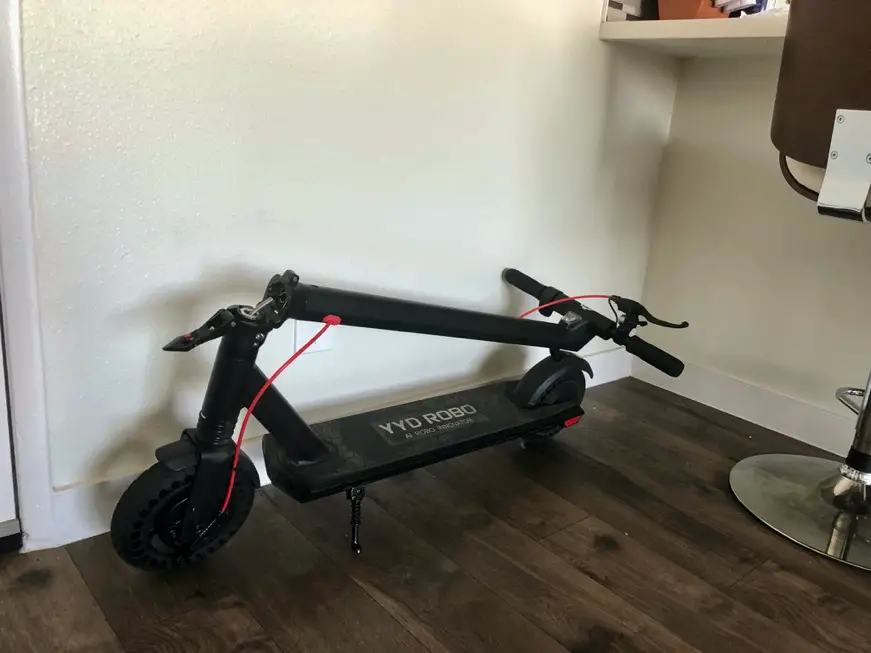
If you want an electric bike, find out what you need to know about cheaper ones before you buy.
Conclusion
If you are looking for something cheap, lightweight, and maneuverable, the electric scooter may be the right choice for you. Electric scooters aren’t as versatile, safe, or long-lasting, but they are an excellent option if you want something small and convenient.
However, the real winner is the folding electric bicycle. Folding electric bikes are more expensive and more complicated to maneuver, but they are safer, more versatile, and can go further at higher speeds. So, spend the extra money on a folding e-bike if you want safety, and speed, and plan to ride long distances.

